Easter is one of the most important holidays in Italy, and one that incorporates religious symbolism as well as traditions and customs celebrated by even those outside of the Christian faith. As is the heart of this culture, Holy Week is another reason to embrace family, friends, great food, and plenty of celebration.
Easter is known as Pasqua in Italy and it falls on April 1 this year. Festivities across the country typically begin on Good Friday with church service attendance and continue through Easter Monday, or Pasquetta.
 The most famous celebration takes place in Rome at St. Peter’s Basilica in the Vatican City. The sitting Pope conducts evening mass, which is then followed by his walk with a large candlelit procession that starts at Palatine Hill and continues to the Colosseum, making 14 prayer stops along the way. These coordinated stops mirror the last walk of Christ. Religious or not, there is a lovely harmony that is experienced with onlookers lucky enough to participate in this sacred tradition.
The most famous celebration takes place in Rome at St. Peter’s Basilica in the Vatican City. The sitting Pope conducts evening mass, which is then followed by his walk with a large candlelit procession that starts at Palatine Hill and continues to the Colosseum, making 14 prayer stops along the way. These coordinated stops mirror the last walk of Christ. Religious or not, there is a lovely harmony that is experienced with onlookers lucky enough to participate in this sacred tradition.
Over the course of the weekend there are celebrations across the country in the form of parades and festivals. You’re more than likely to see a procession of people carrying statues of either Jesus or Mary with olive branches in hand as they make their way through town.
Most Italians are spending Pasqua Sunday enjoying large meals with those they love. Traditional meals include some sort of egg dish in the morning such as a frittata. The egg represents new life and new beginnings, symbolic of the resurrection of Christ. And while you won’t see the Easter Bunny hopping around Italy, they do color eggs and indulge in chocolate hollowed eggs filled with small treasures. If you walk the streets to browse shop window displays, you’ll likely see some very intricate and beautiful chocolate eggs created by the many master chocolatiers in Italy. These small works of art tend to make their way to the Easter table, along with the colored variety.
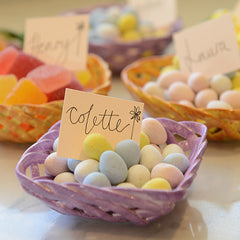 We have our own tradition to incorporate spring on our Easter table with the addition of our favorite handmade Italian dinnerware. These Intrecci handmade ceramics filled with candy egg treats and paired with spring plantings inside our Primavera flowerpots definitely make the table feel like Easter.
We have our own tradition to incorporate spring on our Easter table with the addition of our favorite handmade Italian dinnerware. These Intrecci handmade ceramics filled with candy egg treats and paired with spring plantings inside our Primavera flowerpots definitely make the table feel like Easter.
Beyond all the sweet treats, Italians feast on lamb for their main Pasqua meal. Every region may prepare it in their unique way, but at the center, lamb is the meal of choice. Roast lamb, lamb stew, grilled lamb, lamb skewers, lamb with sauce – it doesn’t matter, as long as it’s lamb.
Artichokes are also common across the country given spring is when they are harvested, but they are definitely a significant tradition in places like Rome. There are even artichoke festivals in some areas to celebrate the harvest season. A grouping of raw artichokes in a large Intrecci basket would be beautiful on the spring table!
Other traditional foods include Easter soups, rice balls, sweet breads, as well as specialty cakes like the dove-shaped treat called colomba. We’ve shared a recipe for the most popular Easter bread, or Pana di Pasqua, below along with a nice wine suggestion for your Easter meal.
After a full weekend of quality time with the family, Easter Monday is typically the time Italians spend with friends. Since it’s the first opportunity for a spring outing, the Pasquetta tradition is to find a favorite outdoor destination and have a picnic. You’ll find Italians flocking to seaside beaches, mountains, vineyards, parks, and country villas to celebrate the start of the season steeped in Mother Nature.
Whatever your plans this Easter, we hope you can spend it with those that mean the most to you. Don’t forget to fill the table with the bounty of the spring season and embrace the intended spirit of renewal and new life.
Happy Easter!
Recipe | Pana di Pasqua
Makes 6 breads
 This recipe is from one of our favorite bloggers, The Italian Dish Blog. It’s an easy version of this traditional Italian sweet bread and we think your family will really enjoy. You can either follow the instructions below, or visit Elaine’s site and see more photos along with the instructions to help you along.
This recipe is from one of our favorite bloggers, The Italian Dish Blog. It’s an easy version of this traditional Italian sweet bread and we think your family will really enjoy. You can either follow the instructions below, or visit Elaine’s site and see more photos along with the instructions to help you along.
Ingredients:
- 1 package Rapid Rise (instant) yeast, about 2-1/4 teaspoons
- 1 1/4 cups milk
- pinch of salt
- 1/3 cup butter
- 2 eggs, beaten
- 1/2 cup sugar
- 3 1/2 cups flour (approximate)
- 1 egg, beaten with 1 teaspoon of water
- 6 dyed Easter eggs *
- sprinkles or pearl sugar
Instructions:
* Tip: the Easter eggs do not need to be hard-boiled. They cook when the bread bakes. So just dye the eggs uncooked, but be careful they don't crack.
In a small saucepan, warm the milk and butter together, till butter melts. In a large mixer bowl, combine yeast, salt, eggs, and sugar.
Add the warm (not hot - it will kill the yeast) milk and butter. Add about half the flour and beat until smooth with dough hook. Slowly add the remaining flour to form a stiff dough. Don't worry about how much flour it ends up being, just keep adding until the dough is not sticky anymore.
Knead until smooth with either dough hook attachment or turn out on floured board and knead. Place in a greased bowl, cover and let rise in a warm place until doubled, about an hour.
Punch the dough down and divide into 12 pieces. Roll each piece to form a 1 inch thick rope about 14 inches long and, taking two pieces, twist to form a braid, pinching the ends, and loop into a circle. (See Elaine’s images for visual instructions.)
Place on two baking sheets lined with parchment paper or Silpats. Cover and let rise until double, about an hour again. Brush each bread with beaten egg wash. Add the sprinkles or sugar on the top. In the middle of each bread ring, gently place an Easter egg, making an indentation with the egg.
Bake at 350 degrees until golden - about 20 minutes. Cool on rack. You can eat the eggs, but if you leave the bread sitting out for a few hours, don't eat them. Common sense.
Wine Pairing
For an easy wine pairing, we suggest this Italian Pinot Grigio made by the Candoni De Zan family in the Veneto region of Italy.
Their tasting notes suggest it’s “Crisp, well-structured and sophisticated. It has a rich, pear-like nose, which is followed by crisp acidity, a medium body and a delicious mouth feel.”
Sounds like the perfect pairing to your Easter meal and our Pana di Pasqua recommendation. You can usually find it for less than $14, so why not pick up a few bottles.
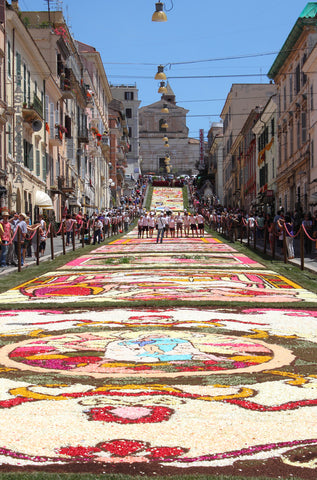 Italians welcome the beauty of the season with a brilliant and artistic flower festival called Infiorata. Introduced by Catholics in the late 1700s to mark the Sunday of Corpus Domini, this feast for the senses is celebrated throughout Italy.
Italians welcome the beauty of the season with a brilliant and artistic flower festival called Infiorata. Introduced by Catholics in the late 1700s to mark the Sunday of Corpus Domini, this feast for the senses is celebrated throughout Italy. 




 Camogli is a stunning seaside village in the Liguria region of Italy. The Camogli Fish Festival, or
Camogli is a stunning seaside village in the Liguria region of Italy. The Camogli Fish Festival, or 



 You know the stereotype. A grey-haired grandma busy in her Italian kitchen, small in stature but big in voice and vigor. She moves about in her apron and sensible shoes like a conductor directing a Puccini opera. From stove top to pot, and spoon to mouth, everything is orchestrated with rhythmic precision. This is her domain. This is her purpose. She is nonna.
You know the stereotype. A grey-haired grandma busy in her Italian kitchen, small in stature but big in voice and vigor. She moves about in her apron and sensible shoes like a conductor directing a Puccini opera. From stove top to pot, and spoon to mouth, everything is orchestrated with rhythmic precision. This is her domain. This is her purpose. She is nonna.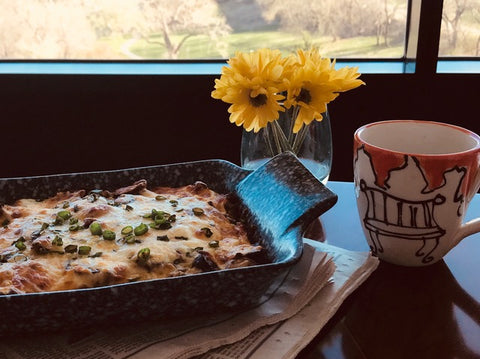

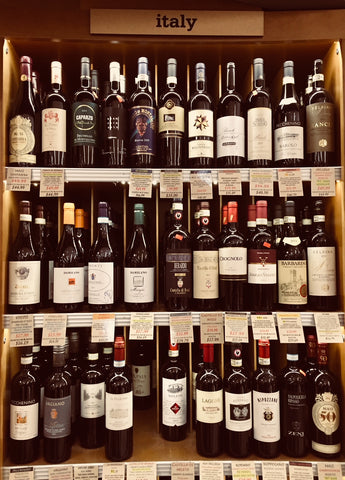 Wine maker Robert Mondavi once proclaimed, “Wine to me is passion. It’s family and friends. It’s warmth of heart and generosity of spirit. Wine is art. It’s culture. It’s the essence of civilization and the art of living.”
Wine maker Robert Mondavi once proclaimed, “Wine to me is passion. It’s family and friends. It’s warmth of heart and generosity of spirit. Wine is art. It’s culture. It’s the essence of civilization and the art of living.” 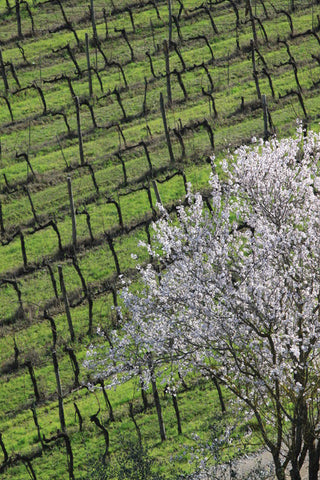

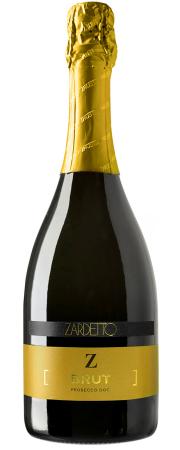 Zardetto – Prosecco Brut NV, $17
Zardetto – Prosecco Brut NV, $17 Tenuta Sette Ponti Crognolo 2015, $28
Tenuta Sette Ponti Crognolo 2015, $28


 The most famous celebration takes place in Rome at St. Peter’s Basilica in the Vatican City. The sitting Pope conducts evening mass, which is then followed by his walk with a large candlelit procession that starts at Palatine Hill and continues to the Colosseum, making 14 prayer stops along the way. These coordinated stops mirror the last walk of Christ. Religious or not, there is a lovely harmony that is experienced with onlookers lucky enough to participate in this sacred tradition.
The most famous celebration takes place in Rome at St. Peter’s Basilica in the Vatican City. The sitting Pope conducts evening mass, which is then followed by his walk with a large candlelit procession that starts at Palatine Hill and continues to the Colosseum, making 14 prayer stops along the way. These coordinated stops mirror the last walk of Christ. Religious or not, there is a lovely harmony that is experienced with onlookers lucky enough to participate in this sacred tradition. We have our own tradition to incorporate spring on our Easter table with the addition of our favorite handmade Italian dinnerware. These Intrecci handmade ceramics filled with candy egg treats and paired with spring plantings inside our Primavera flowerpots definitely make the table feel like Easter.
We have our own tradition to incorporate spring on our Easter table with the addition of our favorite handmade Italian dinnerware. These Intrecci handmade ceramics filled with candy egg treats and paired with spring plantings inside our Primavera flowerpots definitely make the table feel like Easter.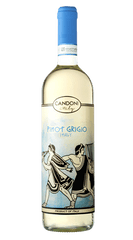 For an easy wine pairing, we suggest this Italian Pinot Grigio made by the Candoni De Zan family in the Veneto region of Italy.
For an easy wine pairing, we suggest this Italian Pinot Grigio made by the Candoni De Zan family in the Veneto region of Italy. 

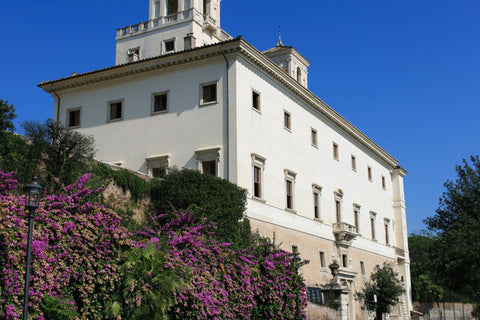 One of our favorite Modigliani collections is our
One of our favorite Modigliani collections is our 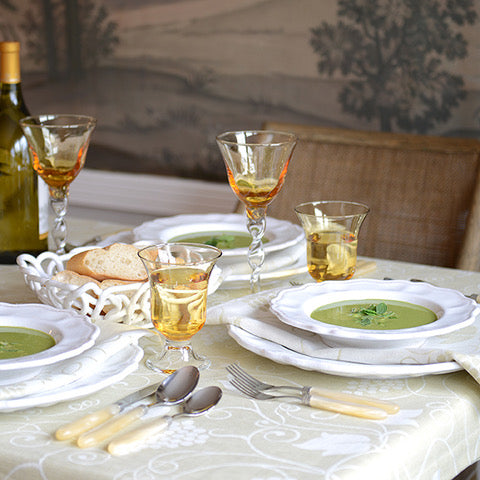
 For this recipe, there’s a mix of flavors. You have the stronger mint combined with a more earthy flavor from the parsley. Then you have the sweet of the peas combined with the onion, vegetable broth, and salt and pepper components. While it’s a simple spring soup, it still has a complexity of flavors coming together. But the dominant flavor is the aromatic mint.
For this recipe, there’s a mix of flavors. You have the stronger mint combined with a more earthy flavor from the parsley. Then you have the sweet of the peas combined with the onion, vegetable broth, and salt and pepper components. While it’s a simple spring soup, it still has a complexity of flavors coming together. But the dominant flavor is the aromatic mint.

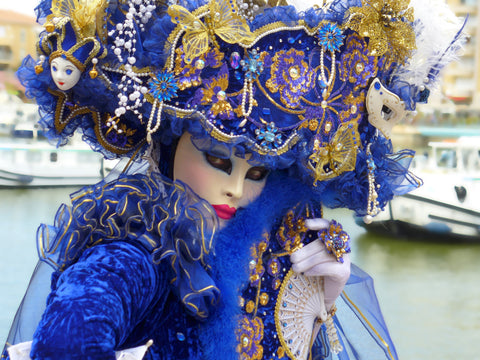 Carnevale in any country is a brilliant experience, filled with theatrics, vibrant pomp and circumstance, and maybe a little mayhem. There are colorful and exuberant celebrations all over Italy, but a few stand out as the ones not to miss. Each has its own traditions making them memorable and something to try at least once.
Carnevale in any country is a brilliant experience, filled with theatrics, vibrant pomp and circumstance, and maybe a little mayhem. There are colorful and exuberant celebrations all over Italy, but a few stand out as the ones not to miss. Each has its own traditions making them memorable and something to try at least once.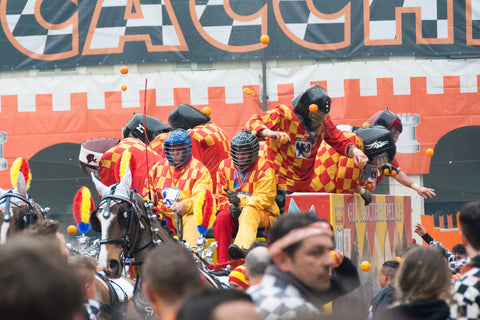 In a small city in the northern part of Piedmont, they host one of the more unusual events. In the town of Ivrea they celebrate with what is called the Battle of the Oranges.
In a small city in the northern part of Piedmont, they host one of the more unusual events. In the town of Ivrea they celebrate with what is called the Battle of the Oranges.